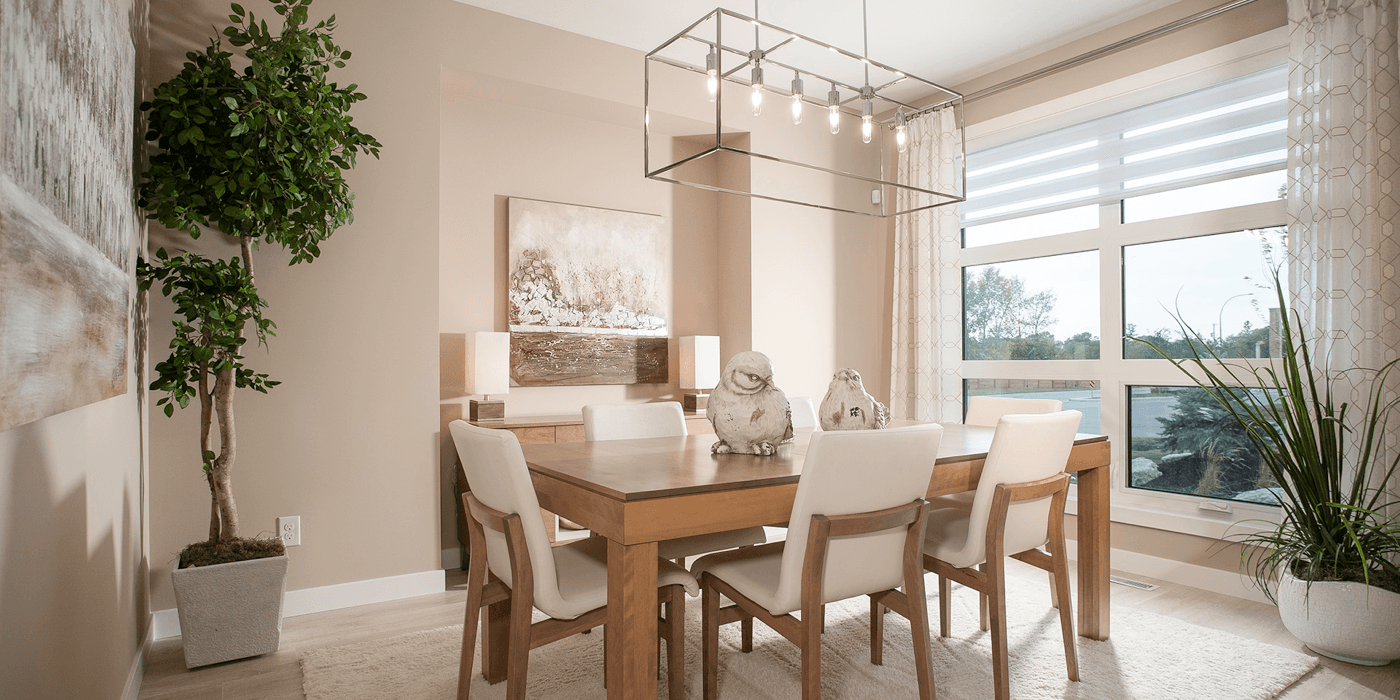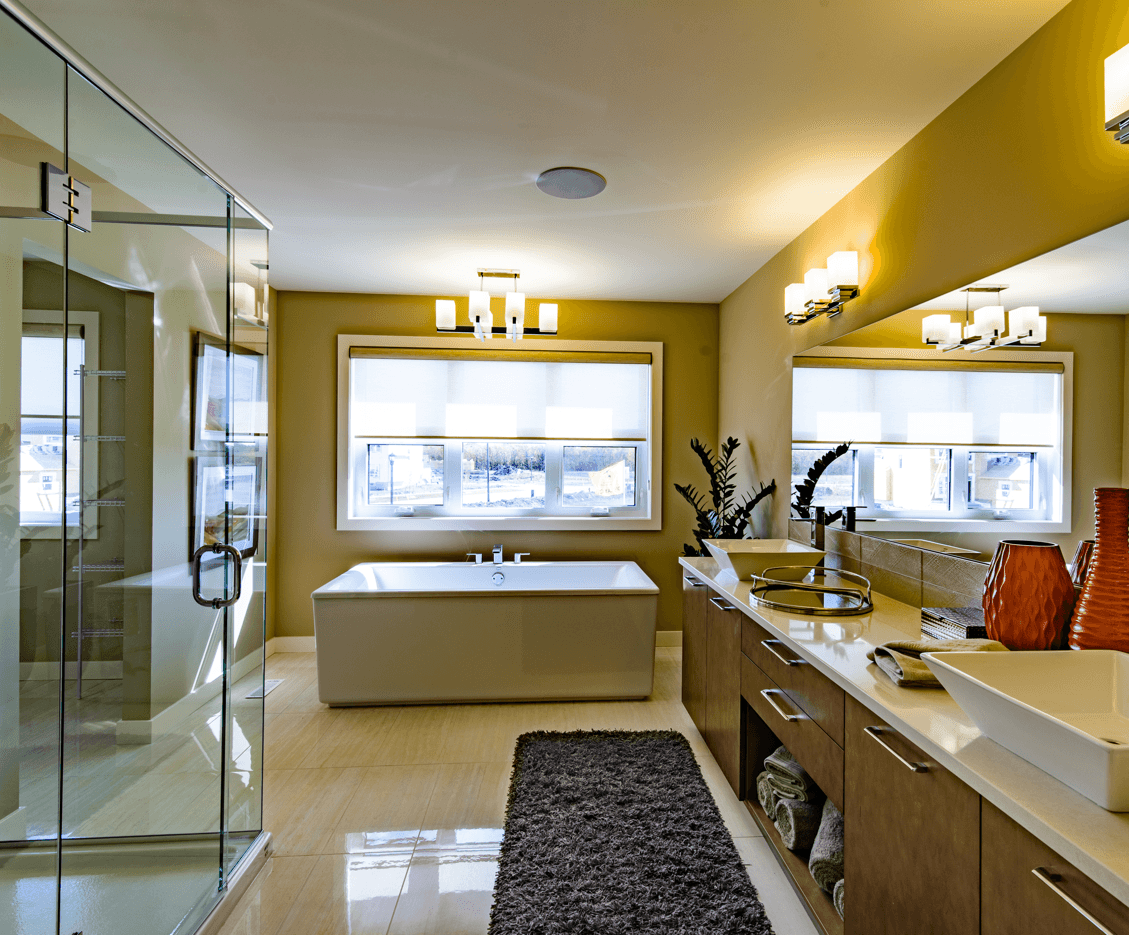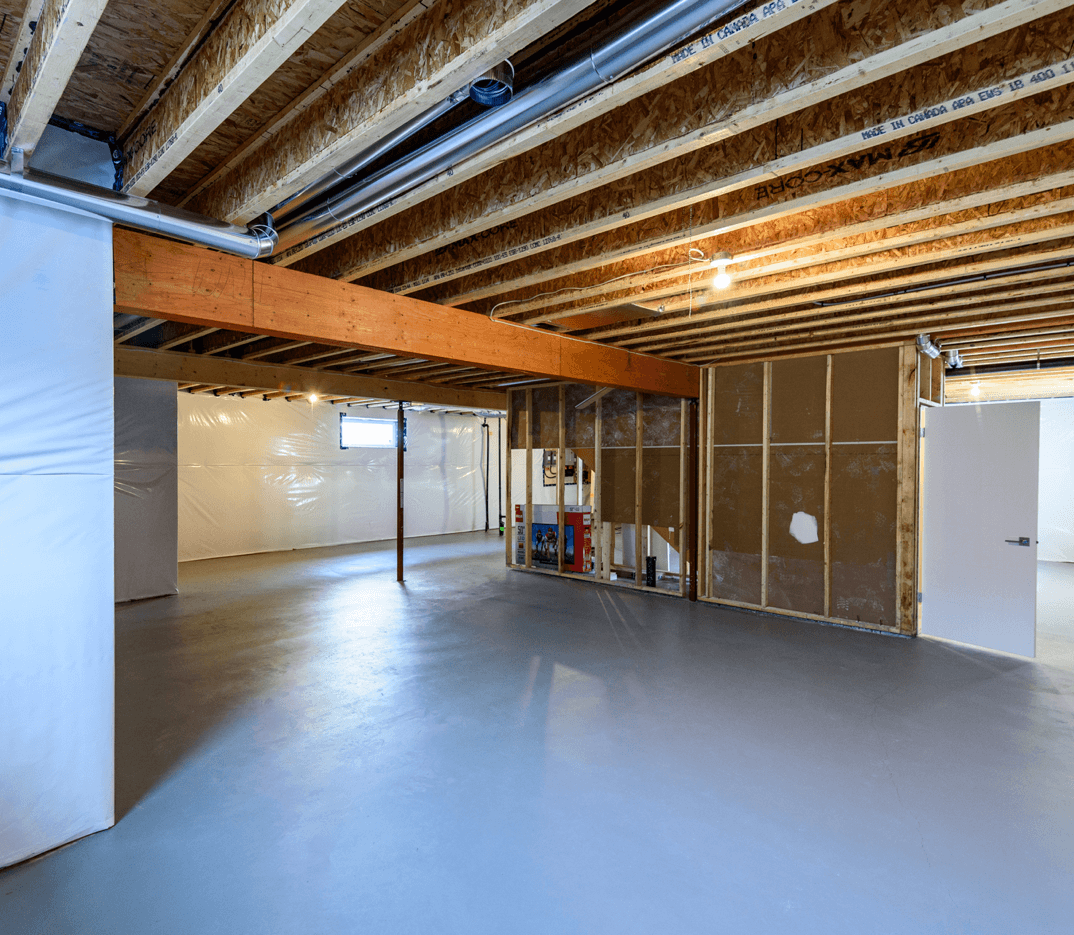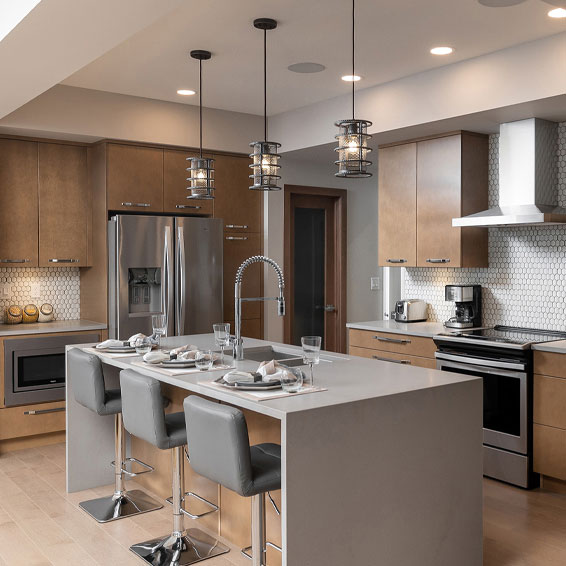
When is the last time you took a hard look at the layout of your current house? Are you using the dining area as your home office, with the kids’ homework mixed in with your important papers? Maybe science projects are taking up half of your kitchen countertop?
Even sharing a bathroom with your spouse and multiple children is wearing a bit thin. Thoughts have crossed your mind that your current home isn’t sufficient anymore, and it’s time to find a new home to better fit your family’s needs.
But where do you begin?
Choosing the best floor plan for your family means deciding the types of features, rooms, and space you need not only for today but for years to come. If it works within your budget, it’s not a bad idea to find a home with a little more space than you think you might need immediately. You’ll thank yourself later for that extra bit as you grow into your next home.

Determining the Space You Need
Having enough bedrooms and bathrooms for everyone is really just a starting point. Think about your current lifestyle and the pain points that are bringing you to the decision to buy your next home. Do your kids need their own rooms? Do you all share a single bathroom? Is your dining area large enough for your family to sit comfortably at dinner? What about entertaining? What kind of space would be conducive to the type of gatherings you host?
By making a list of these items, you can create for yourself a clear picture of the type of new home you might need. Once you have your own wishlist, you can compare it to the standard new home features of a particular floor plan. If something is missing, think about the upgrades you can add to your new home, and ensure you get exactly what you hoped for.
If you have a larger family, you may find it difficult to find a floor plan that works just right for all of you, as well as your particular lifestyle. Often times, kids will be forced to share a room, and finding enough flexible space for everyone to stretch out seems nearly impossible.
Let’s Start with a Den
In older homes, a den’s function was more aligned with the idea of a guest room, or a multipurpose space with a sofa bed. Dens were designed to be in line with the other bedrooms in the home. Today, a den is generally a more open space closer to the great room and kitchen in a home, providing an alternative flex room for the home’s more modern needs. A lot of builders refer to this space a ‘lifestyle room’ or ‘flex room’.
You may not be ready to think about additional spaces now if, for example, you have one young baby, but it can quickly become desirable down the road. A flex room, den, or loft space can be an ideal multi-purpose space that your family will grow into over the years.
It can start out as a play area where all the toys are kept in one neat space. As your children grow older, the toys can be moved and this space can be turned into a homework hub, where the family computer is stationed and bookshelves hold textbooks and school projects.
This space could also be ideal for a home office to run an at-home business or to do freelance work. More and more parents are choosing to work from home rather than send their children to expensive daycare. A flex space is a great area for this type of operation and gives one or both parents the flexibility to stretch their entrepreneurial wings while still enjoying life with their children.
The possibilities really are endless with this room – a games room, home gym, an additional bedroom if needed – it’s a space you can customize to fit your family perfectly.
A Separate Formal Dining Area
Over the past several decades, dining rooms have disappeared from most floor plans in exchange for an eat-in nook in the kitchen area. This is mainly due to families spending less time eating formal meals together, which can work for some families, but not those who expect to accommodate more than four people at a table at one time. As families trade electronics for quality time at dinner, a formal dining space is the perfect solution.
Several of our models still offer a separate formal dining area with plenty of space for a large dining set and china cabinet. This is in addition to the eat-in nook in the kitchen space, so your family can casually eat in the nook, or you can hold proper family meals in your formal dining room.
Having Enough Bedrooms
One of the most common challenges (especially for large families) is having enough bedrooms to go around! Perhaps you have kids who don’t want to share a room anymore, you have another family member moving into your home, or you need to accommodate multiple generations under one roof. Everyone should have his or her own space.
Many of our floor plans contain options such as a loft or open-to-below spaces that can be altered to accommodate a fourth bedroom. These conversions don’t greatly affect the remaining bedrooms in any way, so you’re adding more function without sacrificing square footage. In addition to these adjustable models, our Saratoga model comes standard with four bedrooms on the upper floor.
Additionally, all of our models come with the option of a basement development plan if you choose to add more bedrooms downstairs.
Loft Space
Loft space is an open room on the upper floor of your home that offers many different functionalities. Mainly used as a media area with comfortable seating, this space could be a secondary living area to your great room, allowing a family with older children to watch their own shows or play video games while the parents have their own entertainment downstairs. This space can also be set up as a quiet reading area with built-in bookshelves, or even a craft space with a full setup of working tables and built-in storage.

Basement Development
If you plan to stretch your living space into the basement, look for floor plans that are designed to allow a large amount of usable space below grade. Keep in mind that teleposts will be part of the standard floor plan and may get in the way of where you’d place your walls in a developed basement. Alternatively, you can opt for a steel beam to replace these posts, allowing for wide open spaces and more freedom to complete your basement plan as you desire.
When planning bedrooms in a basement, remember they are required to have a window, so this could limit how many bedrooms you plan to include. Whether you plan to finish your basement with the construction of the rest of your home or develop it later, speak with your builder about how basement development works to prepare ahead of time.
In all of our models, there’s plenty of room for a large recreational space, and at least one additional bedroom. These spaces can be personalized to meet your family’s unique needs.
When choosing your home, you’ll want to consider the type of living space the basement offers or talk to your builder about basement development and how it works. Select a floor plan that offers the ability to add more bedrooms downstairs, as well as a recreational area. Your basement design can work the same as a loft space, with the added benefit of more room. You’ll be able to enjoy your own entertainment upstairs while they do their type of thing in a completely separate space. It may be just the thing to keep the family sane.
An Ensuite Fit for Relaxation
An ensuite is so much more than simply an additional full bathroom in the home. This space is exclusively yours as a homeowner, and as such can be the ultimate getaway within your own home.
There are all sorts of ensuite features you can include in your space. Opt for a large soaker tub and a separate full sized shower. A vanity with dual sinks makes for less stressful mornings, or you can utilize the extra counter space for a makeup desk or just more storage. Oversized walk-in closets provide oodles of storage for both your clothes and shoes without having to dig through piles on a shelf.
A Few Other Things to Consider
There are some other considerations you should take into account when it comes to choosing the best floor plan for your family.
Will the space fit furniture needs in the future?
Think back to your first apartment and its related furniture, if you had much. Your furniture was probably pretty lightweight, sparse, and just enough to get by. As you grow into your home, your need for different – perhaps more or larger – furniture grows as well. Your new home should be able to fit the furniture you need for today as well as for the future.
What kind of storage will you need?
As your family grows, the items you go through seem to compile. With the first baby comes a whole lot of new items you never had before: furniture, clothing, toys, you name it. But as that child gets older and no longer needs the crib or high chair, you are reluctant to get rid of it, in case of another baby. Or your friends might need them. You’ll need space to store these things.
Additionally, as you grow into your home your need for more space will continue to grow as you add holiday decorations, outdoor equipment, craft supplies, and other lifestyle items that seem to multiply over time.
Size is important
The overall square footage is also something to consider. You want to match your square footage needs with the right floor plan. As your family grows, the larger the floor plan is, the easier it will be to grow into it. Although decades ago many families grew up in small homes, our modern day lifestyles keep us indoors far more often than our previous generations, meaning we need more space in which to live peacefully among one another. To choose the best floor plan for your family, imagine your family and lifestyle in ten years and choose a floor plan you feel would be ideal for your personal space.
Flexibility and options make for a functional and comfortable home. If your family is in need of more space, there are plenty of floor plan options available to not only find the space you are looking for but to personalize your home to your unique needs.
Originally posted May 12, 2017, updated March 8, 2019.




